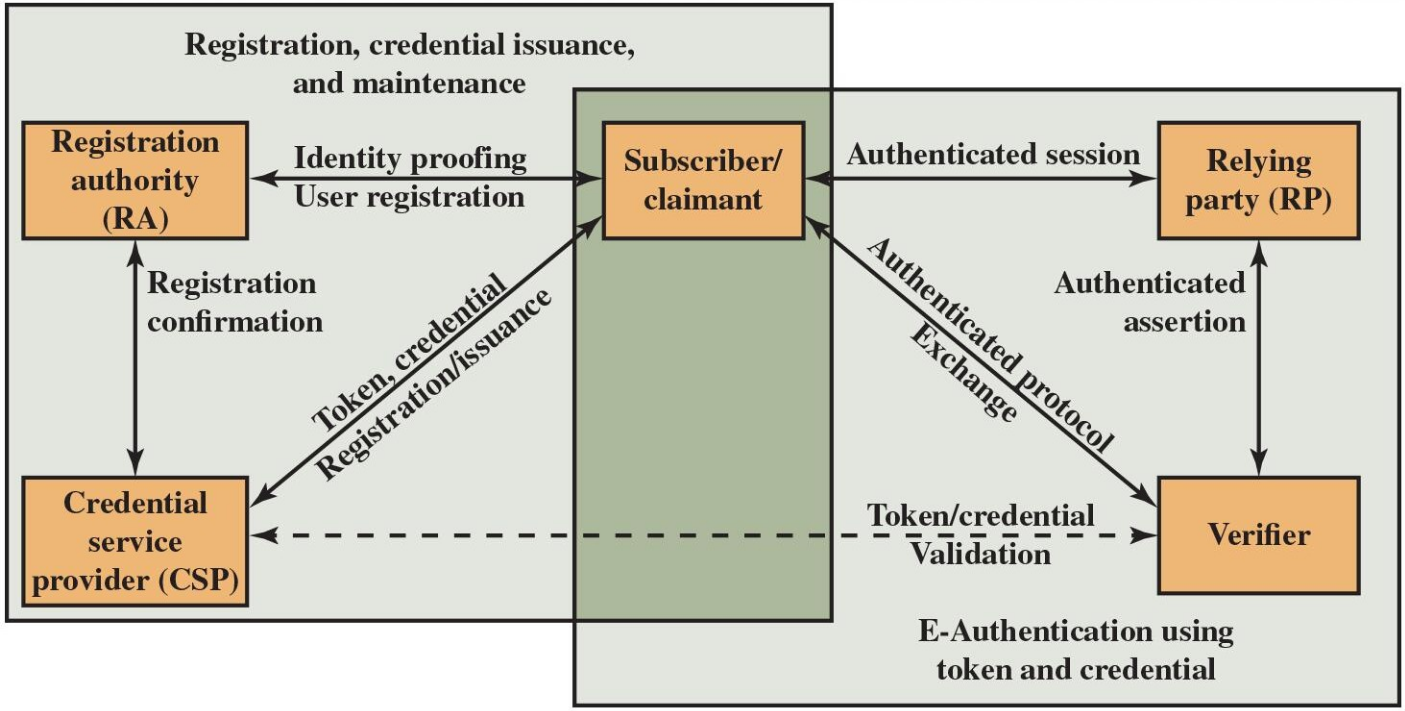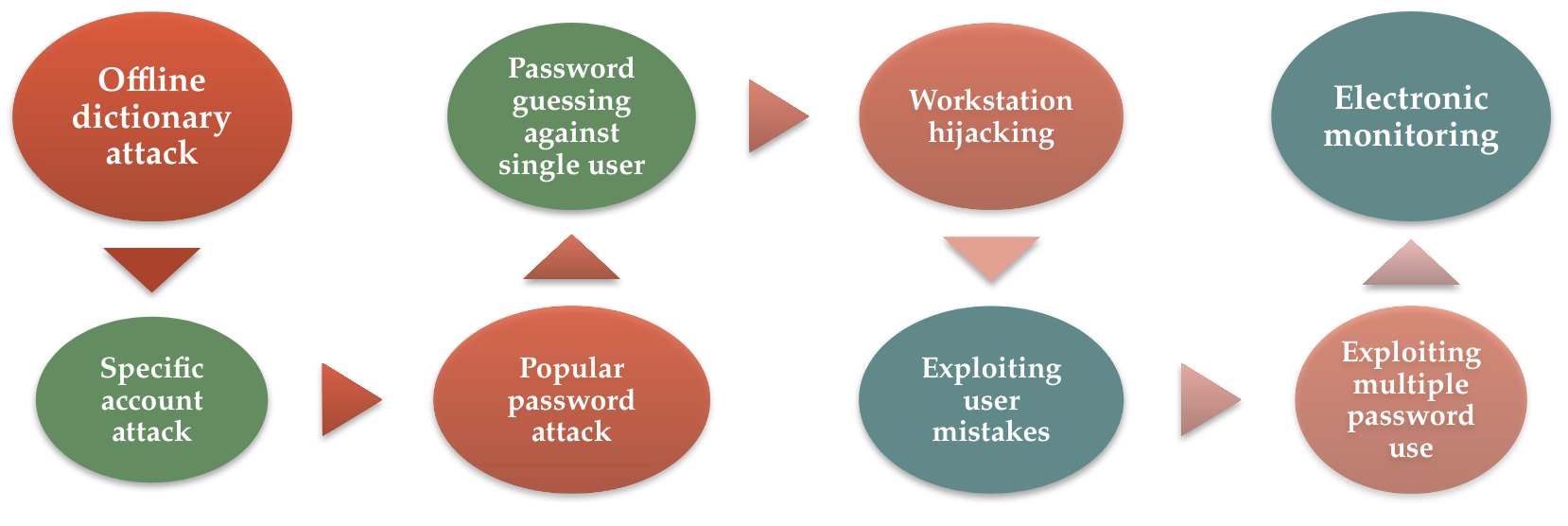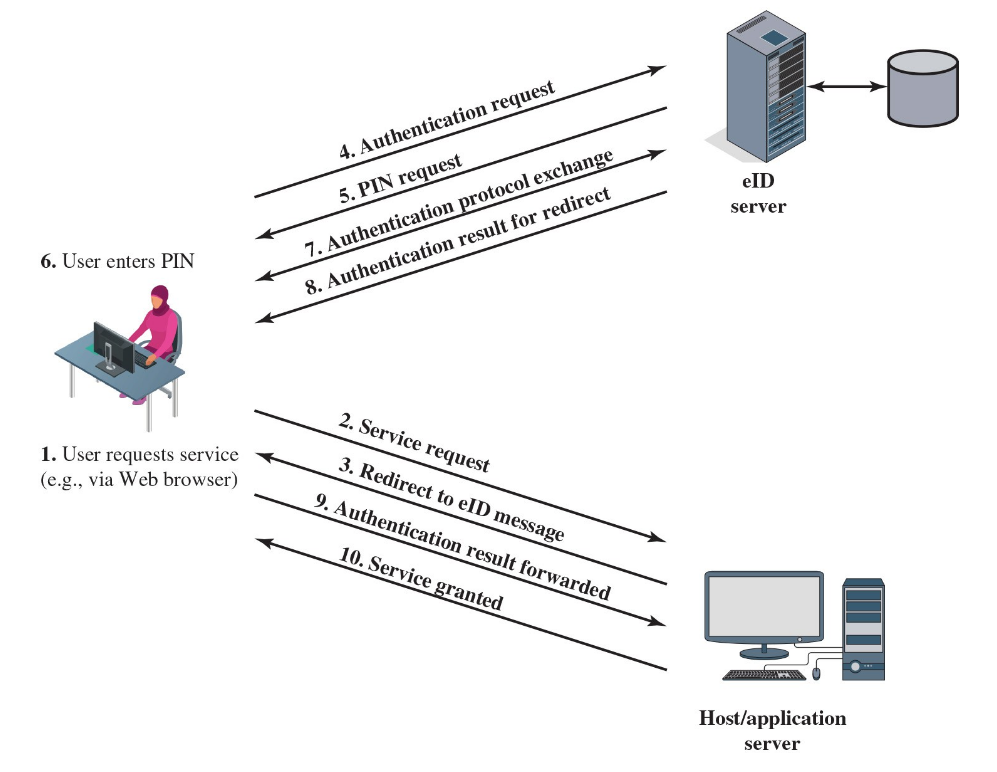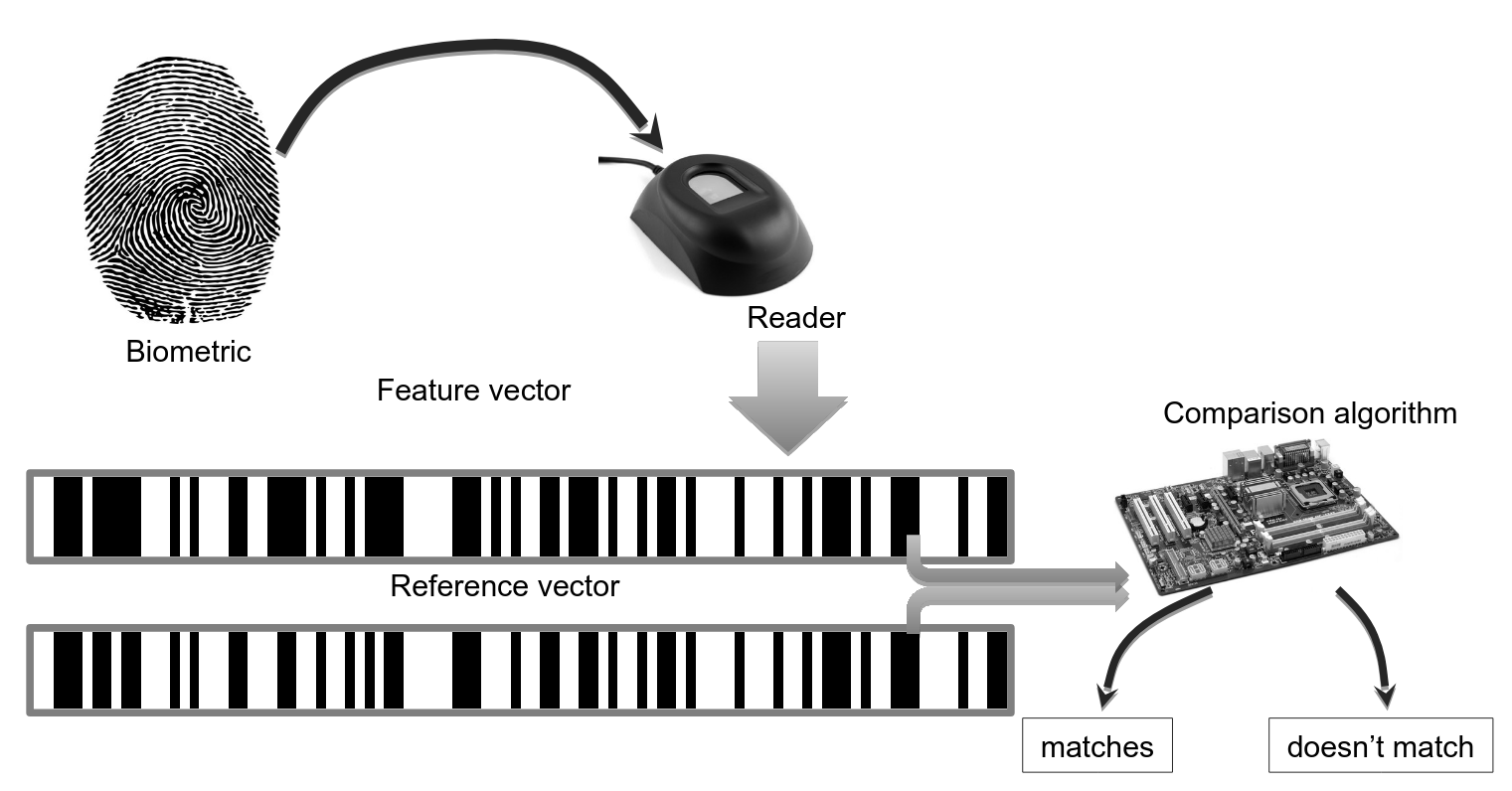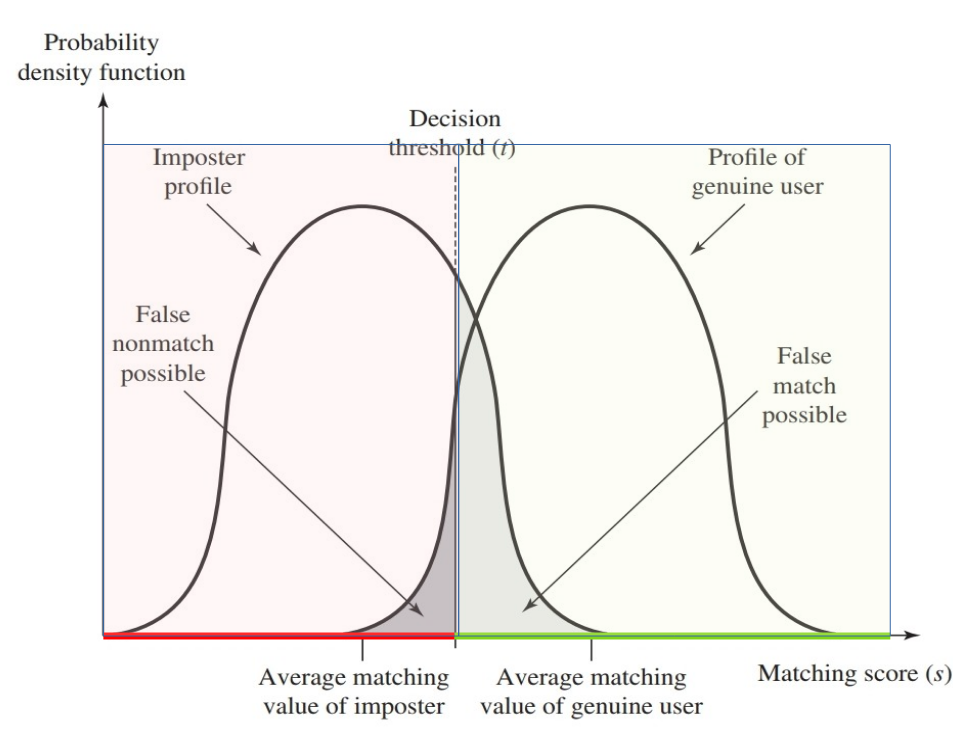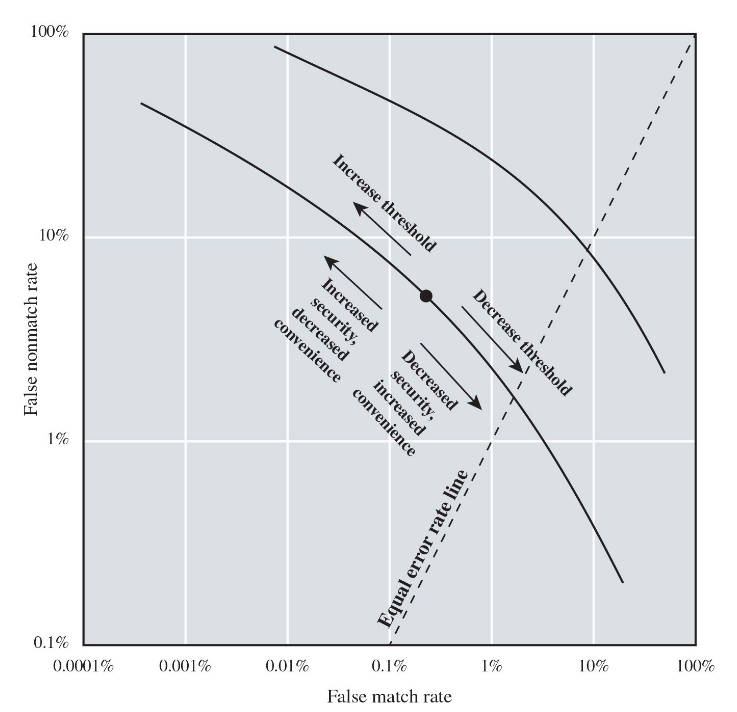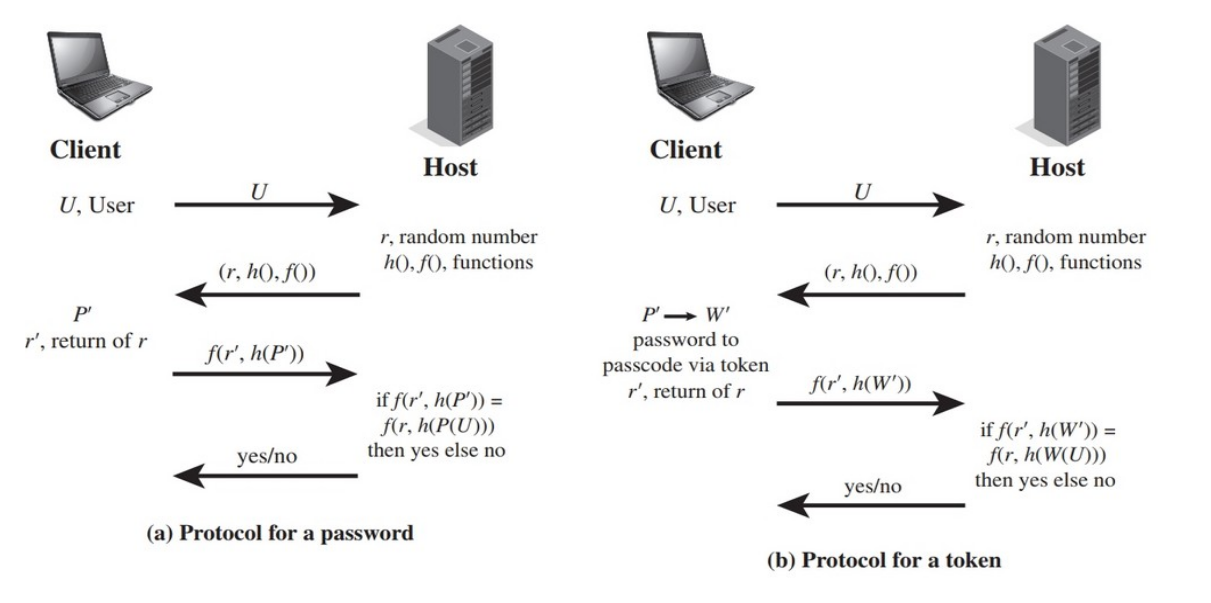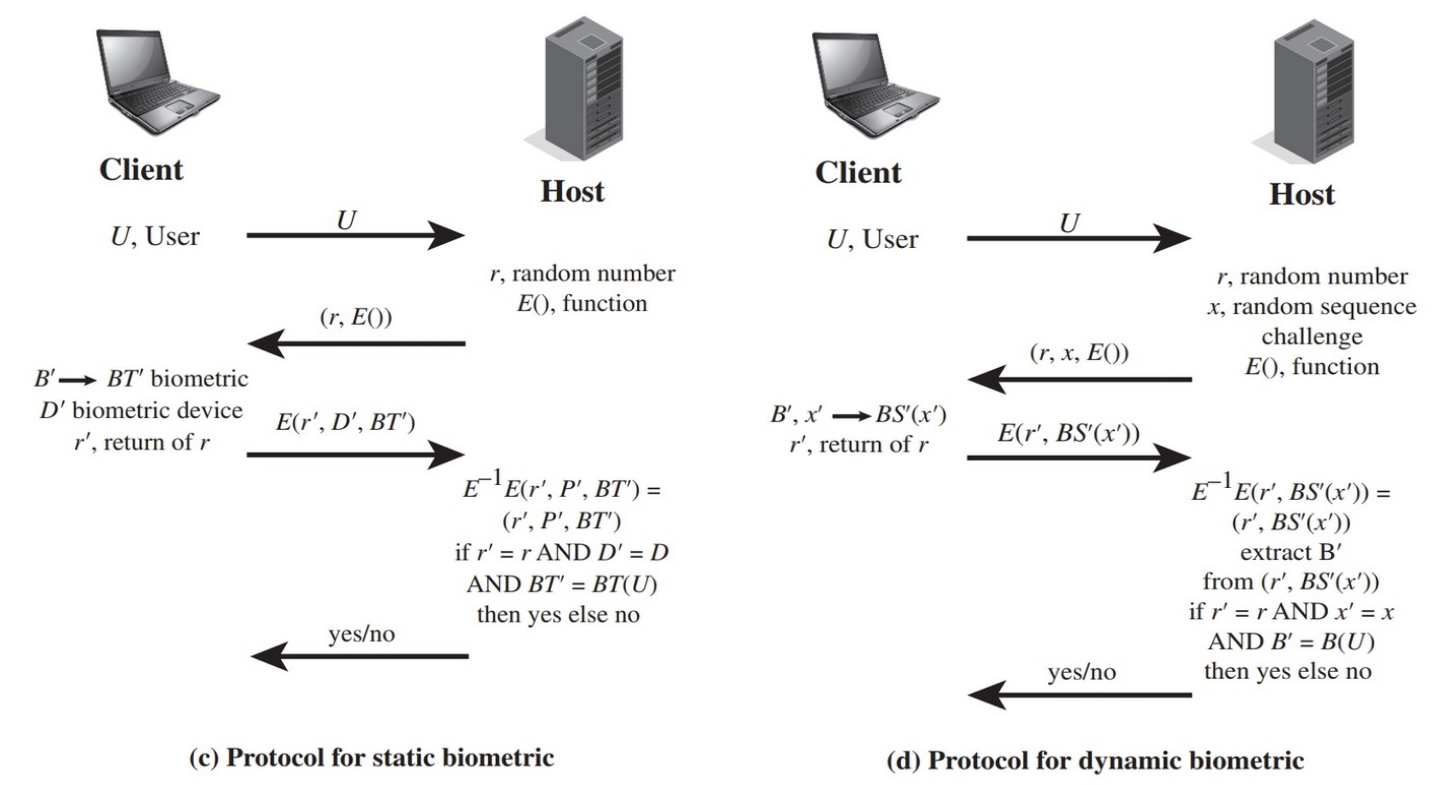authentication, definition by NIST
The process of establishing confidence in user identities that are presented electronically to an information system
The definition by NIST lists some identification requirements for protecting data:
- uniquely identify and authenticate system users, and associate the unique identification with processes acting on behalf of those users
- uniquely identify and authenticate devices before establishing a system connection
- implement multi-factor authentication for access
- implement replay-resistant authentication mechanisms for access
- replay attack - capturing a valid message (/authentication data) and resending it later to re-gain access
There are three aspects that need to be managed:
- identifiers
- select and assign identifiers to individuals, groups, roles, services or devices
- prevent the reuse of identifiers for a defined time period
- passwords
- maintain an updated list of commonly-used, expected or compromised passwords, and verify that passwords are not in that list
- transmit passwords only over cryptographically protected means
- select a new password upon first use after account recovery
- enforce composition and complexity rules for passwords
- authenticators
- verify the identity of the individual/group/… receiving the authenticator as part of the initial authenticator distribution
- establish initial authenticator content
- establish and implement administrative procedures for initial authenticator distribution; for lost, compromised, or damaged authenticators; and for revoking authenticators
- change default authenticators at first use, and change them frequently or when relevant events occur
- protect authenticator content from unauthorized disclosure and modification
- feedback of authentication information must be obscured during the authentication process
digital identity guidelines architecture model
means of authentication
The four means of authentication are based on
- something you know (e.g. password)
- something you possess ⟶ token (e.g. smart card)
- something you are ⟶ biometrics (e.g. fingerprint)
- something you do ⟶ dynamic biometrics (e.g. voice pattern)
assurance levels for user authentication
IAL
An organisation can choose from a range of authentication technologies, based on the degree of confidence in identity proofing and authentication processes.
There are three levels of Identity Assurance Levels (IAL):
- IAL 1 ⟶ no need to link the applicant to a specific real-life identity
- IAL 2 ⟶ provides evidence for the claimed identity using remote or physically-present identity proofing
- IAL 3 ⟶ requires physical presence for identity proofing
AAL
AALs define options an organisation can select
passwords
Password-based authentication is based on a login-password combination. The user’s ID determines their privileges, and whether they’re authorised to access the system.
password-based authentication has many vulnerabilities
a very big vulnerability is that to social engineering (attempting to use various psychological conditions in humans to get hold of confidential information) - some examples of it are:
- pretexting - creating a story to convince someone to reveal secret information
- baiting - offering a “gift” in exchange for an unsafe action
- quid pro quo - offering a service and expecting something in return
storing passwords
Passwords are stored through cryptographic hash functions, which output a checksum on messages of any length.
- the output is of a constant, fixed size (independently from the input length)
A cryptographic hash function has to:
- be impossible to invert
- be very efficient to compute
- make it very hard to find two input values with the same output
(also talked about here)
There are different ways of storing passwords:
unix-style, legacy
- up to 8 printable characters-long
- 12-bit salt used to modif DES encryption into a one-way hash function
password + saltis encrypted 25 times, and the output is translated to a 11 character sequence
This approach is now considered inadequate, though it is often required for compatibility reasons.
unix-style, today
UNIX:
- 1000 iterations of MD5 crypt routine with a salt of up to 48 bits
- no limitations on password length
- produces a 128-bit hash value
OpenBSD:
- uses Bcrypt (hash function based on the Blowfish symmetric block cypher), which allows passwords of up to 55 characters
- requires a 128-bit salt
- produces a 192-bit hash value
- includes a configurable cost variable to increase time required to perform a hash
password strength and cracking
what makes a password strong?
- using both upper and lower case characters, special characters, numbers
- unpredictability
- length
The main vulnerability passwords have is that they have to be stored in human memory (so they are far from random).
Password cracking attacks include:
- dictionary attacks - attackers develop a large dictionary of possible passwords and try each one against the password file (each password has to be hashedd using each salt value)
- rainbow table attacks - hash values are pre-compiled for all salts
password selection strategies
- user education - users can be taught the importance of using hard to guess passwords, and can be provided with guidelines for selecting strong passwords
- computer generated passwords (users have trouble remembering them)
- reactive password checking - system periodicaly runs its own password cracker to find guessable passwords
- complex password policy - system checks to see if the password selected by the user is allowable, and if not, rejects it.
- the goal is to eliminate guessable passwords while allowing the user to select a password that is memorable
- hard to understand the balance, + it requires space and time to check the passwords
periodically changing password
Requiring users to change passwors periodically, while intuitive, is not a good practice, as it incentivizes the use of weaker passwords that are easier for people to set and remember.
Tokens
Authentication with tokens can be done via:
- barcodes ⟶ barcodes encode a unique item number that allows the scanning system to look up the corresponding details
- since they are easily clonable, they provide convenience but not security
- magnetic stripe cards ⟶ plastic cards with a magnetic stripe containing personalized information about the card holder
- the first track of a magnetic card stripe contains the cardholder’s full name, account number and more
- the second track may contain the account number, expiration date, information about the bank and more
- they are easy to read and cheap to reproduce
- smart tokens
Smart tokens
Smart tokens:
- include an embedded microprocessor
- can look like calculators, keys, small objects
- can have manual interfaces (like keypads)
- require an electronic interface to communicate with compatible readers/writers
- can implement different authentication protocols: static, dynamic password generators, and challenge-response
Smart cards
Smart cards look like credit cards, but they include an electronic interface. They contain an entire microprocessor made up of a processor, memory, and I/O ports. They typically include three types of memory:
- Read-Only (ROM) ⟶ stores the data that doesn’t change during the card’s life
- Electrically erasable programmable ROM (EEPROM) ⟶ holds application data and programs
- Random access (RAM) ⟶ holds temporary data generated when applications are executed
eIDs
National electronic identity cards are examples of smart cards. In addition to other national ID cards, they provide:
- ePass - a digital representation of the cardholder’s identity
- eID - an identity record that an authorised service can access with the cardholder’s permission
- eSign - private key and certificate verifying the key; generates a digital signature
To ensure that the contactless RF chip in the eID card cannot be read without explicit access control, the Password Authenticated Connection Establishment (PACE) protocol is used:
- for online applications, access is established by the user via six-digit PIN
- for offline application, either the MRZ printed on the back of the card or the six-digit card access number (CAN) printed on the front is used
OTPs
OTP (One-Time Password) devices are hardware authentication tokens. They have a secret key to generate an OTP, which is entered by the user and validated by the system.
They use a block cipher/hash function to combine secret key and time or nonce value (arbitrary number that can only be used once in a cryptographic communication) to create the OTP. They have a tamper-resistant module for secure storage of the secret key.
The main disadvantage to hardware authentication tokens is that any other person can see the code (which is why they are used in multifactor authentication)
Time-based one-time password (TOTP)
Time-based OTPs (TOTPs), are used in many hardware tokens and by many mobile authenticator apps.
The client and the server pre-establish the unix time from which to start counting time steps, and the length of a one-time duration. Both the client and the server calculate a C_t value (current_unix_time/time_step).
C_t and the secret key (which client and server share) are then used in the HMAC (hash-based MAc) to get an authentication tag
- TOTPs aren’t vulnerable to replay attacks, as the code changes every 30 seconds
- systems using time based OTP need to allow for clock drift between token and verifying system
Authentication using a mobile phone
Authentication can also be done on a mobile phone, in two main ways:
- via SMS
- one of the simplest approaches
- requires mobile coverage to receive the sms
- if the mobile is lost or stolen, the user will lose access and somene else might gain it
- an attacker might also intercept messages using either a fake mobile tower, or by attacking SS7 signaling protocol
- via mobile authenticator apps:
- they implement a one-time password generator with the TOTP algorithm
- they don’t require an internet connection, and can be used with multiple accounts
- the phone might still be lost or stolen
- an attacker might compromise them by installing malware
Biometrics
Biometrics are measures used to uniquely identify a person, based on biological or physiological traits.
Biometric systems incorporate scanners or sensors to read in information, which is then compared to stored templates of accepted users.
- based on pattern recognition
Biometric systems are technically complex and expensive when compared to passwords and tokens.
representation
biometric accuracy dilemma
Determining how close a presented feature has to be to a reference feature isn’t easy.
In this depiction, the comparison between the presented feature and a reference feature is reduced to a single numeric value, which, to be accepted as a match, has to be greater than a preassigned threshold.
security vs convenience
There are three steps in the operation of a biometric authentication system:
- enrollment

- verification
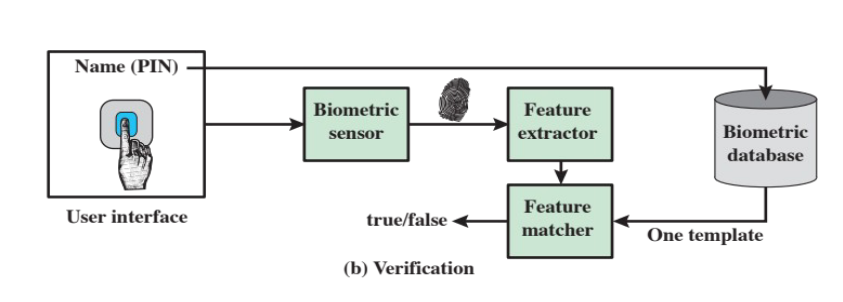
- identification

Remote user authentication
Authentication over a network, the internet or a communications link is more complex - there are additional security threats, such as eavesdropping, password capturing, replaying an authentication sequence that has been observed.
Remote authentication generally relies on some form of a challenge-response protocol to counter threats.
basic challenge-response protocol for remote user auth
password and token
static and dynamic biometric
Authentication security issues
There are a lot of different attacks that can be attempted:
- client attacks ⟶ adversary attempts to achieve user authentication without access to the remote host or the intervening communications path
- host attacks ⟶ directed at the user file at the host where passwords, token passcodes, or biometric templates are stored
- eavesdropping ⟶ adversary attempts to learn the password by some sort of attack that involves physical proximity
- replay ⟶ adversary repeats a previously captured user response
- trojan horse ⟶ an application or physical device masquerades as an authentic application or device for the purpose of capturing a user password, passcode, or biometric
- denial-of-service ⟶ attempts to disable a user authentication service by flooding the service with numerous authentication attempts
| Attacks | Authenticators | Examples | Typical defenses |
|---|---|---|---|
| client attack | password | guessing, exhaustive search | large entropy; limited attempts |
| token | exhaustive search | large entropy; limited attempts; theft of object requires presence | |
| biometric | false match | large entropy; limited attempts | |
| host attacks | password | plaintext theft, dictionary/exhaustive search | same as password; 1-time passcode |
| token | passcode theft | capture device authentication; challenge response | |
| biometric | template theft | capture device authentication; challenge response | |
| eavesdropping, theft, copying | password | “shoulder surfing” | user diligence to keep secret; administrator diligence to quickly revoke compromised passwords; multifactor authentication |
| token | theft, counterfeiting hardware | multifactor authentication; tamper resistant/evident token | |
| biometric | copying (spoofing) biometric | copy detection at capture device and capture device authentication | |
| replay | password | replay stolen password response | challenge-response protocol |
| token | replay stolen passcode response | challenge-response protocol; 1-time passcode | |
| biometric | replay stolen biometric template response | copy detection at capture device and capture device authentication via challenge-response protocol | |
| trojan horse | password, token, biometric | installation of rogue client or capture device | authentication of client or capture device within trusted security perimeter |
| denial of service | password, token, biometric | lockout by multiple failed authentication | multifactor with token |
